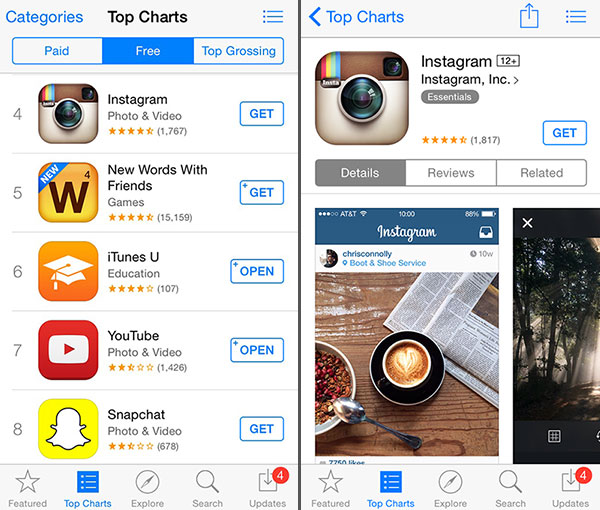Apple has removed the word “free” from download buttons in its iOS and OS X app stores, replacing it with “get.”
European regulators recommended the action to Apple and Google earlier this year.
In July, Google removed the “free” label from games that could be downloaded without cost — but required in-app purchases to access a full set of features.
In-app purchasing in so-called free software has been a target of regulators in the United States and Europe this year. In January, Apple paid a US$32.5 million settlement with the FTC over in-app purchases made by minors without their parents’ consent.
Google also settled with the FTC over unauthorized in-app purchases, and in September paid at least $19 million to app buyers. Meanwhile, an FTC case against Amazon for unauthorized in-app purchases made on its Kindle devices is pending in court.
Apple Awareness Efforts
Replacing “free” with “get” on an app’s download button is just the latest in a series of moves Apple has made to ensure that consumers are aware when they or their kids are making an in-app purchase. For example, software with in-app purchases must include disclosures on their purchase pages and under their listings on Top Chart pages.
In addition, a passcode must be entered before an in-app purchase can be made. Buyers are notified that such a purchase is about to be made, and they’re asked for final permission via pop-up warning before a buy can be completed.
The latest version of Apple’s mobile operating system — iOS 8 — contains controls in its Family Sharing feature to approve or deny in-app purchases by children.
Those efforts didn’t satisfy European regulators, however, who continued to take umbrage at the use of the word “free” for misleading consumers about the inclusion of in-app purchases.
“While Apple’s clearly trying something new to respond to pressure from the EU and elsewhere, it’s not clear that this will have much of an impact on consumers,” Craig Palli, chief strategy officer for Fiksu, told the E-Commerce Times.
Language Trumps Design
“Over the short term, it may make users a little more conscious of their download decisions, but in the long run, any changes may not last — only time and data will tell,” Palli said.
Changing “free” to “get” makes the buying process more transparent, maintained John Breyault, vice president of public policy, telecommunications and fraud at the National Consumers League.
“More transparency about whether an app requires money to use it to its fullest extent is good for consumers,” he told the E-Commerce Times. “To say an app is free and then require money is deceptive.”
While “get” may not be the most elegant word to put on a download button, the English language may have gotten the best of Apple’s designers in this case.
“What else, exactly, could they say on the button?” Palli wondered. “The word has to be extremely short and simple to work in that limited real estate, and it still needs to make it clear that there’s no cost to download the app.”
Smart Marketing Move
As disconcerting as “get” may sound to some ears, there are those that believe Apple may be pulling another marketing rabbit out its hat.
“This is a clear marketing ploy that prompts you take action,” said Tim Bajarin, president of Creative Strategies.
“It encourages action. From a marketing psychology standpoint, it’s a very smart move,” he told the E-Commerce Times.
On the other hand, there could be an initial downside to the change from “free” to “get,” suggested John Carroll, a mass communications professor at Boston University.
“There’s a marketing drawback to this because ‘get’ doesn’t say ‘free’ to me,” he told the E-Commerce Times. “Over time, it may come to mean that, but initially the transition may be a little rocky.”
The new labeling also could create some bumps in the road for developers, but it’s unlikely to change how they do business, noted Ratesh Dhir, CEO of a stealth startup in educational technology.
“I don’t think it’s going to have any difference on the way a developer is going to offer their product,” he told the E-Commerce Times.
“There may be an early impact over the next week or so,” Dhir added, “but once I press the button, and I know it’s not going to charge me anything, I don’t think it’s going to make that much of a difference. We’re all going to get used to this very, very quickly.”























































Finding the right keywords to use in your app title, keyword spot, screenshots and description is the key to increase your app’s visibility.
So when I ask my wife to get me a sandwich, I shouldn’t have to pay that retail price?